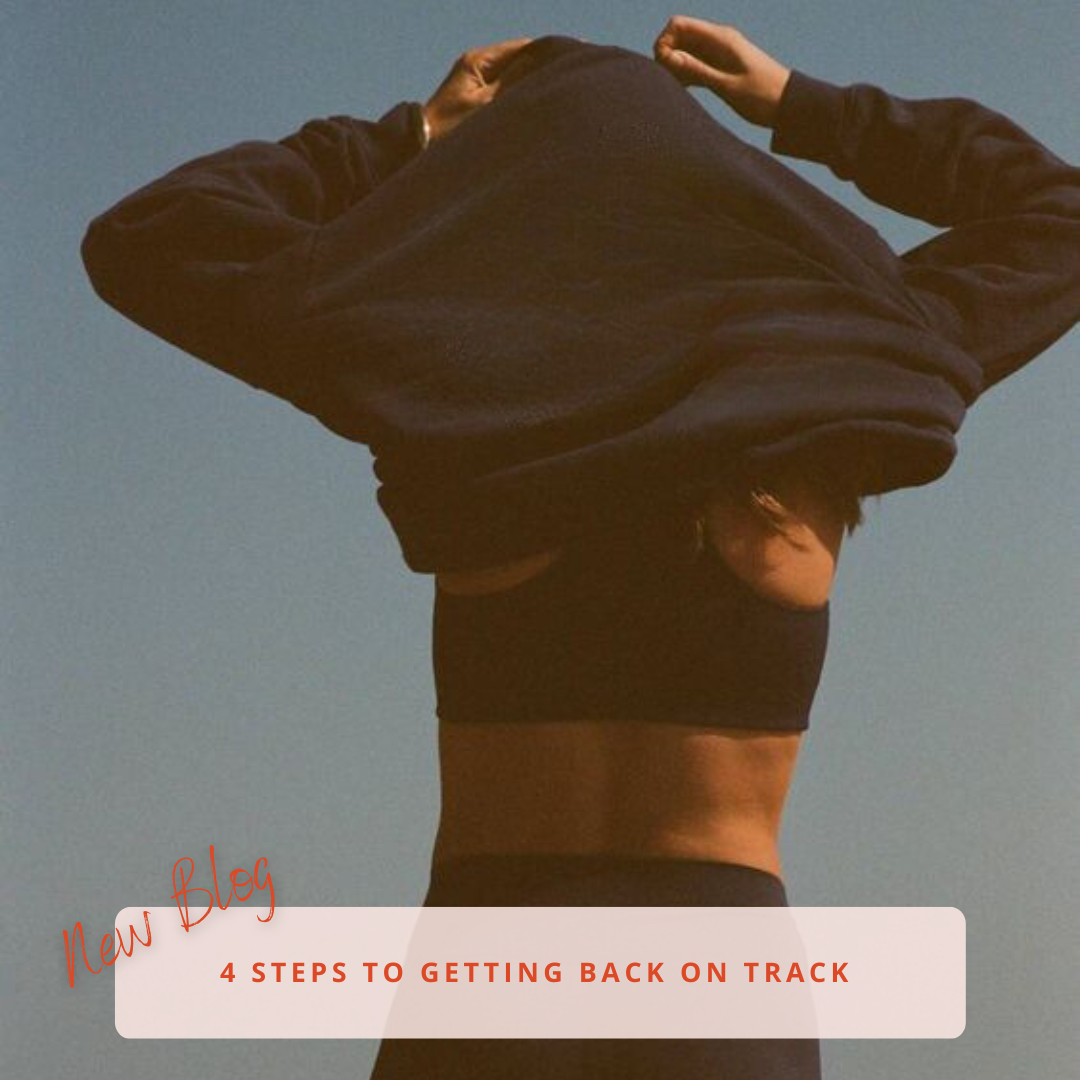
4 Steps To Getting Back On Track
Everyone starts their health and fitness journey determined to form new habits and create a consistent lifestyle. But what people don’t tell you is how to get back on track after falling off over Christmas.
Keep it super simple, this way you’ll be able to commit to getting back on track.
Don’t over complicate it, the easier something is the easier we’ll be able to integrate it back into our lives. It’s very likely that you’re feeling overwhelmed by the very idea of getting back into your fitness regime. So take a deep breath and remember how far you’ve come already. You’ve done it before, and you can most definitely do it again, so let’s set you up for success.
1. Commit to a workout plan
Ever been to the gym without a plan? Wasted a load of time, left feeling defeated? Yeah we’ve all been there. The secret to getting back on track easily is knowing what your schedule is and taking the guesswork out of it.
So ask yourself these questions:
“How many sessions per week can I commit to?”
“Will I train before or after work?”
“What is my goal?”
With these questions we can recommend the right guide for you.
2. Nutrition
Nutrition is always the first priority when getting back on track – an afternoon ice cream and cocktail is usually a summer staple. It’s also the hardest part for many people. After all, turning up to your selected guide doesn’t require too much though whereas nutrition is something you need to constantly consider depending on your current goal, ie gain muscle mass, this requires tracking your protein intake to ensure its sufficient.
3. Don’t underestimate the importance of getting enough sleep
People frequently underestimate the importance of sleep. Aside from the obvious symptoms of feeling tired or irritable, poor sleep can have a much wider impact when it comes to our health & fitness; from poor recovery and performance to bad digestion. Here are some tips on how to improve the quality of your sleep.
Keep your schedule consistent (as much as you can) – this means going to bed and waking up roughly at the same time each day. Once you’re used to the schedule, your biological clock will adjust and you will want to get out of bed naturally at your set time, yes even before the alarm goes off.
Have a “pre bedtime” routine. At least 30-60 minutes before trying to sleep, turn your screens off and start winding down, whether it means doing a pre-sleep meditation, reading a book, or skincare routine. Create an environment that is calming and peaceful, keep your room cool, light a candle and turn the lights down.
Include regular physical activity in your daily routine: Regular physical activity can promote better sleep. However, avoid being active too close to bedtime as you’ll get endorphins racing around your body.
Pay attention to what you drink and eat before bed don’t go to bed hungry or stuffed. In particular, avoid heavy or large meals within a couple of hours of bedtime. Discomfort might keep you up.
Caffeine and alcohol can also interfere with sleep. And even though alcohol might make you feel sleepy at first, it can disrupt the quality of your sleep later in the night.
4. Focus on what you can control
We waste so much time focusing on what stopped us from doing something rather than addressing the power we have to make a change. This is especially true after we fall out of routine, get knocked back or lose sight of our goals. Anytime we’re faced with something that feels challenging or difficult — we come up with excuses… “I don’t have enough time. I don’t have access to it. I’m not sure what to do. I feel uncomfortable and stupid”. Focus on the small steps you can take each day that will get you closer to your goal and build your routine, rather than putting too much thought or energy into factors you can’t control.






